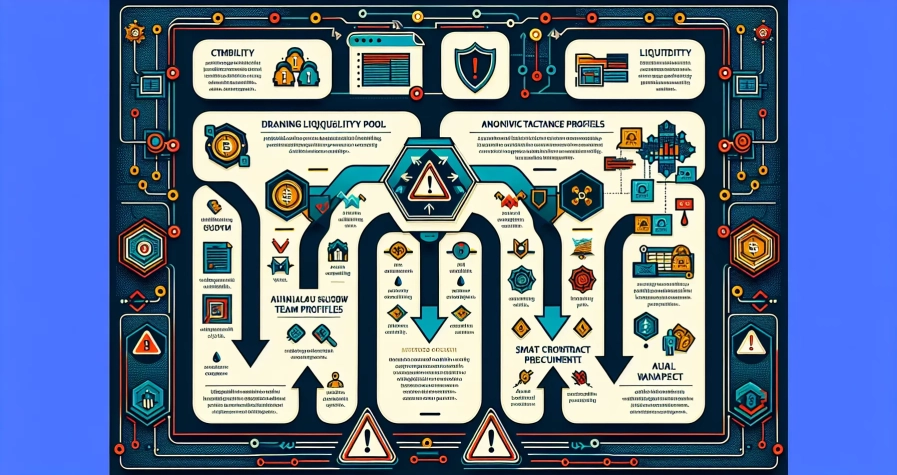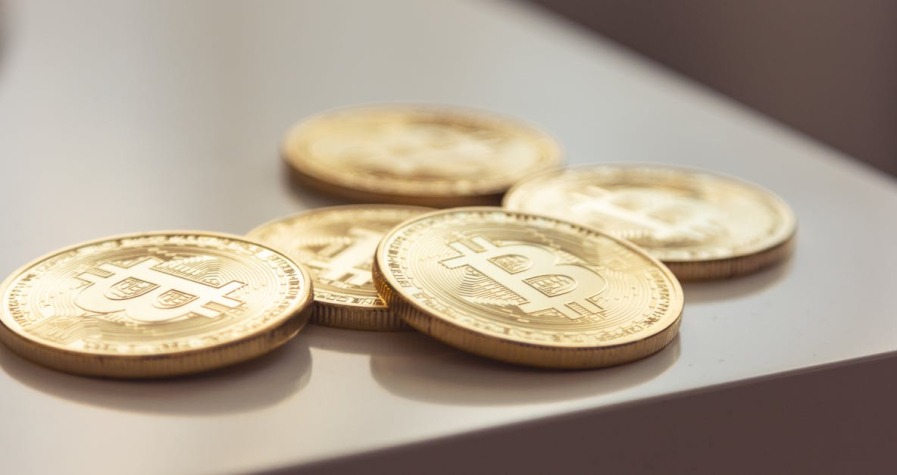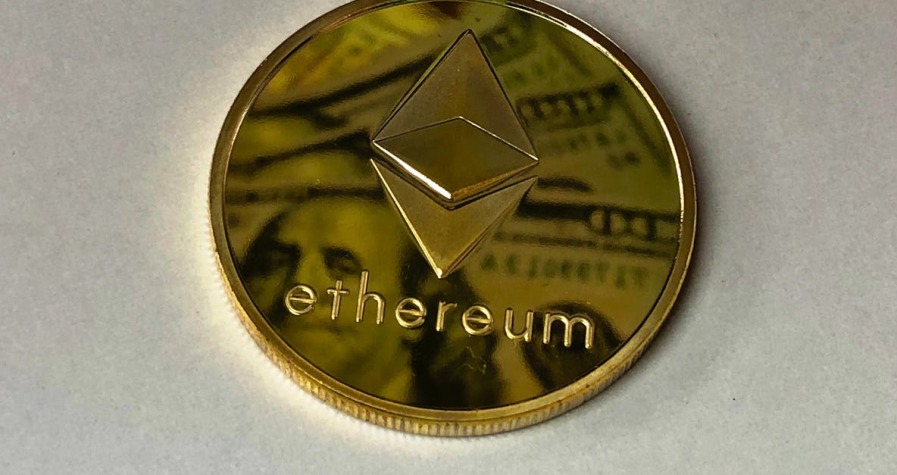Key Takeaways
- IDOs are a decentralised fundraising method where blockchain projects sell tokens directly through decentralised exchanges (DEXs), eliminating intermediaries and providing immediate liquidity upon launch through automated market maker protocols.
- IDOs offer significant advantages over ICOs and IEOs including immediate token trading, lower barriers to entry, reduced costs (£1,000-£10,000 vs £100,000+ for IEOs), and global accessibility through simple wallet-based participation.
- Popular IDO launchpads like Polkastarter and Bounce Finance streamline the process by vetting projects and implementing fair distribution mechanisms, typically requiring users to stake platform tokens for guaranteed allocation access.
- IDO participation carries substantial risks including extreme market volatility with potential 50-80% price drops, regulatory uncertainty in most jurisdictions, and smart contract vulnerabilities that could result in permanent fund loss.
- Successful IDO participation requires thorough preparation including proper wallet setup with sufficient cryptocurrency for purchases and fees, comprehensive due diligence on project teams and tokenomics, and verification of smart contract audits.
- The decentralised nature provides transparency and democratisation but removes traditional investor protections, making careful research and risk assessment crucial before participating in any IDO launch.
You’ve probably heard about Initial Public Offerings (IPOs) and Initial Coin Offerings (ICOs), but there’s a newer player in the cryptocurrency fundraising space that’s gaining serious traction: Initial DEX Offerings (IDOs). If you’re curious about this innovative funding mechanism that’s revolutionising how blockchain projects raise capital, you’re in the right place.
IDOs represent a significant evolution in decentralised finance, offering a more transparent and accessible way for projects to launch their tokens directly on decentralised exchanges. Unlike traditional fundraising methods, IDOs eliminate intermediaries and give retail investors immediate access to new projects alongside institutional players.
This democratised approach has made IDOs increasingly popular among both startups seeking funding and investors looking for early opportunities. Understanding how IDOs work can help you navigate this exciting space and make informed decisions about participating in future token launches.
What Is an IDO (Initial DEX Offering)?
An Initial DEX Offering (IDO) represents a token launch method where blockchain projects sell their tokens directly through decentralised exchanges (DEXs). This fundraising mechanism eliminates traditional intermediaries and provides immediate liquidity for new tokens upon launch.
IDOs operate on automated market maker (AMM) protocols that facilitate token swaps between projects and investors. When you participate in an IDO, you’re purchasing tokens at a predetermined price during a specific time window before they become available for public trading.
The fundamental difference between IDOs and traditional fundraising methods lies in their decentralised nature. Unlike Initial Coin Offerings (ICOs) that rely on centralised platforms or venture capital rounds restricted to accredited investors, IDOs enable anyone with a cryptocurrency wallet to participate in token launches.
Key Components of IDO Structure
IDO participation typically requires specific criteria that projects establish before launch:
- Staking requirements: You often must stake the DEX’s native token to access IDO allocations
- Whitelist registration: Projects frequently implement lottery systems or first-come-first-served registration
- Minimum purchase amounts: Token launches establish floor prices ranging from $50 to $500
- Maximum allocation limits: Individual caps prevent whale domination and ensure broader distribution
Technical Implementation Process
The IDO process follows a standardised sequence across most decentralised exchanges. Projects submit their token contracts for audit and approval by the DEX platform. Smart contracts automatically handle token distribution and price discovery mechanisms.
Liquidity pools get created simultaneously with token launches to ensure immediate trading availability. This immediate liquidity provision distinguishes IDOs from other token launch methods where secondary market trading often experiences delays.
Price discovery occurs through market forces rather than arbitrary valuation methods used in traditional fundraising rounds. You can observe real-time demand and supply dynamics affecting token prices from the moment trading begins.
How IDOs Work
IDOs operate through decentralised exchanges by creating liquidity pools that pair project tokens with established cryptocurrencies like Ethereum (ETH), USDT, or BNB. Smart contracts automate the entire token distribution process, ensuring immediate liquidity and fair access for all participants.
The Process of Launching an IDO
Token Creation marks the first stage where projects develop their cryptocurrency token with specific utility functions and tokenomics. Development teams establish the total supply, distribution mechanisms, and smart contract parameters before proceeding to the launch phase.
Liquidity Pool Setup follows token creation, requiring projects to pair their tokens with established cryptocurrencies on a chosen DEX platform. You’ll find projects typically allocate 20-40% of their total token supply to create these initial liquidity pools, ensuring sufficient trading depth.
IDO Event Launch occurs at a predetermined time when token sales begin directly on the DEX platform. Investors purchase tokens using compatible cryptocurrencies through their connected wallets, with smart contracts executing all transactions automatically and transparently.
Post-Sale Trading begins immediately after the IDO concludes, allowing tokens to trade freely on the DEX with guaranteed liquidity through the established pools. Price discovery happens in real-time as market forces determine the token’s value based on supply and demand dynamics.
Role of Decentralised Exchanges
Platform Infrastructure provided by DEXs like Uniswap, SushiSwap, and PancakeSwap enables IDO hosting through their automated market maker (AMM) protocols. These platforms eliminate intermediaries whilst maintaining transparent, on-chain transaction records for all participants.
Global Accessibility ensures anyone with a compatible cryptocurrency wallet can participate in IDO events without geographical restrictions or complex verification processes. DEX platforms operate 24/7, allowing international investors to access token sales simultaneously.
Cost Efficiency results from removing traditional intermediaries, reducing listing fees from thousands of pounds to minimal gas fees. Projects avoid lengthy approval processes and regulatory compliance costs associated with centralised exchanges whilst maintaining market access.
Immediate Liquidity Provision through liquidity pools guarantees tokens remain tradeable instantly after the IDO concludes. This mechanism prevents the common delays experienced with traditional exchange listings, where tokens might wait weeks or months before becoming available for trading.
IDO vs ICO vs IEO: Key Differences
Understanding the evolution from ICOs to IEOs to IDOs reveals how the cryptocurrency fundraising landscape has transformed to address investor protection and accessibility concerns. Each method represents distinct approaches to token distribution with unique advantages and drawbacks.
| Feature | ICO (Initial Coin Offering) | IEO (Initial Exchange Offering) | IDO (Initial DEX Offering) |
|---|---|---|---|
| Platform | Independent project-controlled website | Centralised cryptocurrency exchange | Decentralised exchange with minimal oversight |
| Intermediary | No intermediary involvement | Exchange validates and intermediates | Launchpad platforms or liquidity pools |
| Liquidity | Delayed exchange listings | Immediate listing on host exchange | Instant liquidity through DEX pools |
| Accessibility | High but unvetted participation | Exchange-restricted participation | Open wallet-based participation |
| Cost Structure | Variable marketing expenses | Exchange listing and vetting fees | Reduced centralised approval costs |
| Control Mechanism | Complete project autonomy | Exchange-managed sale process | Decentralised with launchpad vetting |
Traditional ICOs and Their Limitations
ICOs dominated early blockchain fundraising by allowing projects to sell tokens directly to investors without intermediaries or regulatory oversight. Projects created tokens and marketed them through websites and social media channels, often raising millions within hours.
However, ICOs suffered from significant structural weaknesses. Regulatory uncertainty created legal risks for both projects and investors across different jurisdictions. Scam projects proliferated due to minimal vetting requirements, with fraudulent schemes stealing approximately $1.4 billion from investors between 2017-2018. Token listings often faced months-long delays, leaving investors unable to trade their purchases immediately after sales concluded.
Security vulnerabilities plagued many ICO smart contracts, resulting in fund losses and project failures. Investor protection remained minimal, with no recourse mechanisms for failed projects or fraudulent activities.
IEOs and Centralised Exchange Control
IEOs emerged as centralised exchanges began hosting token sales to address ICO limitations through enhanced vetting and immediate trading capabilities. Exchanges like Binance, Huobi, and BitMax conducted due diligence on projects before allowing fundraising on their platforms.
Centralised exchanges provided improved security measures and fraud prevention through KYC/AML compliance procedures. Investors gained confidence knowing exchanges had evaluated projects before listing, reducing scam risks significantly. Immediate token trading became standard, as exchanges listed tokens directly after sale completion.
However, IEOs introduced centralised control mechanisms that contradicted blockchain’s decentralised principles. High listing fees ranging from $50,000 to $3 million excluded smaller projects from participation. Geographic restrictions limited global accessibility, with exchanges blocking users from specific countries due to regulatory concerns.
Exchange dependency created single points of failure, where platform issues could affect entire token sales. Centralised gatekeeping reduced innovation opportunities for experimental projects that didn’t meet traditional exchange criteria.
Why IDOs Emerged as an Alternative
IDOs developed to combine decentralisation benefits with immediate liquidity provision while reducing costs and barriers from previous fundraising methods. Decentralised exchanges enabled permissionless token launches without centralised authority approval, returning control to project communities.
Cost efficiency became a primary advantage, with IDO launch expenses typically ranging from $1,000-$10,000 compared to IEO fees exceeding $100,000. Smart contracts automated token distribution and price discovery, eliminating intermediary dependencies and reducing operational complexity.
Global accessibility expanded through wallet-based participation, allowing anyone with compatible cryptocurrency wallets to join IDOs regardless of location. Immediate liquidity pools ensured tokens remained tradeable instantly after sales, with automated market makers providing continuous trading opportunities.
Technical innovation flourished as projects could experiment with novel tokenomics and distribution mechanisms without exchange approval. Community governance became possible through decentralised voting systems and transparent smart contract operations.
Despite advantages, IDOs maintain risks including smart contract vulnerabilities, regulatory uncertainty, and potential market manipulation due to reduced oversight compared to centralised alternatives.
Benefits of IDOs
IDOs offer distinct advantages over traditional fundraising methods by combining decentralisation with immediate market access. These benefits make IDOs attractive for both project developers seeking capital and investors pursuing early investment opportunities.
Immediate Liquidity
You gain instant trading access when tokens launch through an IDO, as they become tradeable on the decentralised exchange immediately after the sale concludes. This immediate liquidity eliminates the waiting periods typically associated with ICOs and IEOs, where tokens might remain locked for weeks or months before becoming available for trading.
The DEX’s automated market maker protocol ensures continuous liquidity by maintaining token pairs with established cryptocurrencies like ETH or USDT. You can buy or sell your IDO tokens at any time without depending on exchange listings or regulatory approvals, providing flexibility that traditional fundraising methods can’t match.
Price discovery occurs in real-time through market forces, allowing token values to adjust naturally based on supply and demand. This transparent pricing mechanism helps you make informed trading decisions without artificial price manipulation or delayed market reactions.
Lower Barriers to Entry
You can participate in IDOs with just a compatible cryptocurrency wallet and the required base currency, removing the complex registration processes demanded by centralised platforms. Traditional IEOs often require extensive KYC procedures, minimum investment thresholds, and geographical restrictions that exclude many potential investors.
IDOs democratise investment opportunities by accepting participants regardless of their location, financial status, or institutional connections. You don’t need accredited investor status or meet sophisticated investor requirements that limit access to traditional venture capital rounds.
The permissionless nature of decentralised exchanges means you can participate in multiple IDOs without separate approval processes for each platform. This streamlined access encourages broader participation and creates more diverse investor bases for blockchain projects.
Decentralised Nature
You benefit from enhanced security and transparency as IDO transactions operate through blockchain-recorded smart contracts rather than centralised intermediaries. The decentralised infrastructure eliminates single points of failure and reduces counterparty risks associated with centralised exchange platforms.
Smart contract automation ensures fair distribution by executing predetermined rules without human intervention or potential manipulation. You can verify all transaction details on the blockchain, providing complete transparency throughout the token sale process.
The permissionless environment removes gatekeepers who might restrict access or impose arbitrary requirements on participants. You interact directly with the protocol rather than depending on centralised authorities, maintaining the core principles of decentralised finance while accessing early-stage investment opportunities.
Risks and Challenges of IDOs
IDO participation carries significant risks that you must carefully evaluate before investing. The cryptocurrency market’s inherent volatility, combined with regulatory ambiguity and technical vulnerabilities, creates multiple risk vectors for token purchasers.
Market Volatility
The crypto market experiences extreme price fluctuations that directly impact IDO token values. You face potential rapid price swings that can result in substantial losses, as newly launched tokens often lack price stability mechanisms. Token prices can drop by 50-80% within hours of launch due to market sentiment shifts, whale selling, or broader cryptocurrency market corrections.
Early investors frequently encounter immediate selling pressure from traders seeking quick profits. This creates downward price momentum that affects your investment value regardless of the project’s fundamental strength. The absence of traditional market stabilisers means your IDO tokens remain vulnerable to speculative trading patterns and pump-and-dump schemes.
Regulatory Uncertainty
Most jurisdictions lack comprehensive legal frameworks for IDO operations, creating compliance risks for both projects and investors. You operate in a regulatory grey area where future government actions could impact your investment’s legitimacy or trading ability. Many countries haven’t established clear guidelines distinguishing IDO tokens from securities, potentially subjecting your holdings to unexpected legal restrictions.
Evolving regulations can introduce retroactive compliance requirements that affect token accessibility on exchanges. Your investment may face trading suspensions or delisting if platforms implement stricter compliance measures following regulatory updates. Projects launching IDOs often lack proper legal structure, exposing you to potential regulatory enforcement actions.
Smart Contract Risks
IDO operations depend entirely on smart contract functionality, creating technical vulnerabilities that threaten your investment security. Bugs in smart contract code can lead to permanent loss of funds through exploitable loopholes or coding errors. You rely on automated systems without human oversight, meaning contract flaws can’t be corrected once deployment occurs.
DEX platform vulnerabilities present additional risks beyond individual project contracts. Flash loan attacks, reentrancy exploits, and other DeFi-specific attack vectors can drain liquidity pools containing your purchased tokens. The immutable nature of blockchain technology means you can’t recover funds lost through smart contract exploits or platform compromises.
Popular IDO Launchpads
IDO launchpads streamline the token launch process by vetting projects and creating structured sale mechanisms that prevent common issues like bot manipulation and unfair token distribution. These platforms act as intermediaries between blockchain projects and investors whilst maintaining decentralised principles.
Polkastarter operates as a multi-chain launchpad supporting Ethereum, Polygon, and Binance Smart Chain networks. The platform requires users to stake POLS tokens to access IDO allocations, with higher stakes providing guaranteed participation slots. Polkastarter’s lottery system ensures fair distribution among smaller investors whilst reserving portions for large stakeholders.
Bounce Finance functions as an auction-based launchpad offering multiple sale formats including fixed-price sales, Dutch auctions, and sealed-bid auctions. The platform supports cross-chain functionality across 15+ blockchain networks and incorporates anti-bot measures through its verification system.
DuckStarter focuses specifically on Binance Smart Chain projects and requires users to hold DUCK tokens for participation rights. The platform implements a tiered allocation system where token holdings determine access levels and guaranteed allocation amounts. DuckStarter’s whitelist process includes KYC verification and social media engagement requirements.
TrustSwap provides comprehensive project management tools including token vesting schedules, liquidity locks, and multi-signature wallet integration. The platform’s SWAP token holders gain access to exclusive IDO opportunities through a points-based allocation system that considers holding duration and community participation.
| Launchpad | Supported Chains | Token Required | Allocation Method |
|---|---|---|---|
| Polkastarter | Ethereum, Polygon, BSC | POLS | Stake-weighted lottery |
| Bounce Finance | 15+ chains | AUCTION | Auction-based |
| DuckStarter | Binance Smart Chain | DUCK | Tiered holdings |
| TrustSwap | Multi-chain | SWAP | Points system |
These launchpads typically charge project fees ranging from 2-5% of funds raised whilst providing marketing support, technical audits, and post-launch assistance. Most platforms require projects to undergo rigorous due diligence processes including team verification, tokenomics review, and smart contract audits before approval.
You’ll find that established launchpads offer additional benefits such as insurance funds protecting against smart contract failures, community governance voting rights, and access to private sales before public IDO events commence.
How to Participate in an IDO
Participating in an IDO requires preparation, research and proper wallet configuration to engage safely with decentralised token launches. The process involves several critical steps that determine your success in accessing new token opportunities.
Wallet Setup and Requirements
Configure a compatible cryptocurrency wallet that supports the blockchain network hosting your target IDO. MetaMask and Trust Wallet represent the most widely used options, providing seamless integration with Ethereum, Binance Smart Chain and other major networks.
Load your wallet with the necessary cryptocurrency before the IDO launch begins. Ethereum-based IDOs require ETH for both token purchases and transaction fees, whilst Binance Smart Chain IDOs utilise BNB for similar purposes.
Verify your wallet’s network settings match the IDO platform’s requirements. Incorrect network configurations prevent successful transactions and can result in missed investment opportunities during time-sensitive launches.
Enable sufficient transaction fee allowances in your wallet settings. IDO events often experience network congestion, requiring higher gas fees to ensure your transactions complete successfully within the allocated timeframe.
Test your wallet connection with the chosen DEX platform before the IDO goes live. This preliminary check identifies potential compatibility issues and allows time for troubleshooting without the pressure of active token sales.
Due Diligence and Research
Examine the project’s whitepaper thoroughly to understand its core technology, use cases and long-term viability. Legitimate projects provide detailed technical documentation, clear roadmaps and transparent tokenomics that justify their fundraising goals.
Research the development team’s background, previous projects and industry experience. Established teams with verifiable track records present lower investment risks compared to anonymous or inexperienced groups.
Analyse the project’s tokenomics structure, including total supply, distribution mechanisms and vesting schedules. Well-designed tokenomics prevent excessive dilution and create sustainable value appreciation for early investors.
Engage with the project’s community channels on Discord, Telegram or Twitter to gauge investor sentiment and ask specific questions. Active, responsive communities often indicate genuine project development and ongoing stakeholder engagement.
Evaluate the IDO platform’s reputation and security measures. Established launchpads like Polkastarter and Bounce Finance provide additional project vetting, insurance funds and structured sale mechanisms that reduce fraud risks.
Review smart contract audits conducted by reputable firms such as CertiK or PeckShield. Audited contracts demonstrate the project’s commitment to security and reduce the likelihood of technical vulnerabilities that could compromise investor funds.
Conclusion
IDOs represent a significant evolution in cryptocurrency fundraising that’s reshaping how blockchain projects launch tokens. By leveraging decentralised exchanges you gain access to immediate liquidity transparent pricing and truly democratic participation without traditional barriers.
However you’ll need to approach IDOs with careful consideration of the risks involved. Smart contract vulnerabilities market volatility and regulatory uncertainties require thorough research and due diligence before participating in any token launch.
The future of IDOs looks promising as more sophisticated launchpads emerge and the technology continues maturing. Whether you’re an investor or project founder understanding IDOs is crucial for navigating the evolving landscape of decentralised finance and blockchain innovation.
Frequently Asked Questions
What is an Initial DEX Offering (IDO)?
An IDO is a fundraising method where blockchain projects launch their tokens directly on decentralised exchanges (DEXs). Unlike traditional IPOs or ICOs, IDOs provide immediate liquidity and trading capabilities through automated market maker protocols, allowing both retail and institutional investors to participate without intermediaries.
How do IDOs differ from ICOs and IEOs?
IDOs operate on decentralised exchanges with immediate liquidity, whilst ICOs rely on project websites with delayed trading. IEOs use centralised exchanges with higher costs and geographic restrictions. IDOs offer lower barriers to entry, reduced fees, and global accessibility through decentralised platforms.
What are the main benefits of participating in an IDO?
IDOs provide immediate liquidity after token launch, lower participation barriers requiring only a cryptocurrency wallet, enhanced transparency through blockchain-recorded smart contracts, broader accessibility without geographic restrictions, and real-time price discovery based on market dynamics.
What risks should investors consider with IDOs?
Key risks include extreme market volatility leading to substantial losses, regulatory uncertainty due to evolving legal frameworks, smart contract vulnerabilities that could result in permanent fund loss, and potential DEX platform security issues affecting investment safety.
How do IDO launchpads work?
IDO launchpads are platforms that vet projects and create structured token sales. They prevent bot manipulation, ensure fair distribution, and often require staking their native tokens for participation. Popular launchpads include Polkastarter, Bounce Finance, and TrustSwap.
What preparation is needed to participate in an IDO?
Set up a compatible cryptocurrency wallet, load it with required funds (usually ETH, USDT, or BNB), verify correct network settings, ensure sufficient transaction fees, research the project thoroughly, and check the IDO platform’s requirements and timing.
Which decentralised exchanges commonly host IDOs?
Popular DEX platforms for IDOs include Uniswap, SushiSwap, and PancakeSwap. These platforms provide the necessary infrastructure through their automated market maker protocols, ensuring global accessibility and immediate liquidity provision for token launches.
How is liquidity ensured during an IDO?
Projects create liquidity pools pairing their tokens with established cryptocurrencies like ETH or USDT, typically allocating 20-40% of their total token supply. These pools ensure immediate trading availability and allow real-time price discovery through market forces.









